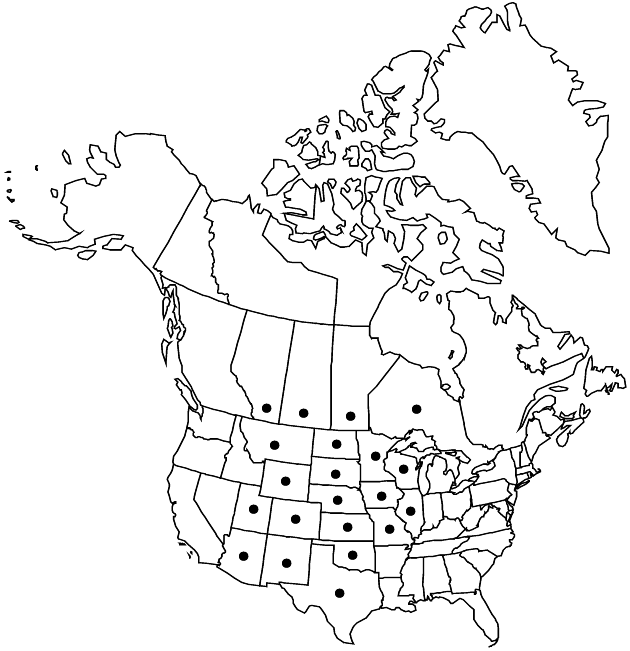Difference between revisions of "Symphyotrichum falcatum var. commutatum"
Phytologia 77: 281. 1995.
FNA>Volume Importer |
imported>Volume Importer |
||
| (2 intermediate revisions by 2 users not shown) | |||
| Line 117: | Line 117: | ||
|publication year=1995 | |publication year=1995 | ||
|special status= | |special status= | ||
| − | |source xml=https:// | + | |source xml=https://bitbucket.org/aafc-mbb/fna-data-curation/src/2e0870ddd59836b60bcf96646a41e87ea5a5943a/coarse_grained_fna_xml/V19-20-21/V20_1115.xml |
|tribe=Asteraceae tribe Astereae | |tribe=Asteraceae tribe Astereae | ||
|genus=Symphyotrichum | |genus=Symphyotrichum | ||
Latest revision as of 19:58, 5 November 2020
Plants colonial, sometimes ± cespitose, usually densely hairy; long-rhizomatous (stems single) or short-rhizomatous with rhizomes branched and entangled (stems clumped), new shoots developing at ends of elongate rhizomes. Stems usually 1, sometimes 1–5+. Peduncles stout, bracts 2–10+. Phyllaries ± unequal, apices strongly squarrose. 2n = 30.
Phenology: Flowering Aug–Oct(–Nov, south).
Habitat: Dry soils, plains, hills, prairies, roadsides, along railroad rights-of-way, stream banks
Elevation: 200–2500+ m
Distribution

Alta., Man., Ont., Sask., Ariz., Colo., Ill., Iowa, Kans., Minn., Mo., Mont., Nebr., N.Mex., N.Dak., Okla., S.Dak., Tex., Utah, Wis., Wyo., Mexico (Chihuahua, Coahuila, Durango, Jalisco, Nuevo León, Sonora).
Discussion
Variety commutatum is introduced in Ontario, Illinois, Missouri, and Wisconsin, and possibly other eastern states. A. G. Jones (1978) treated it as a subspecies with two varieties on the basis of habit and head traits. Variety commutatum in the sense of Jones has decumbent or ascending stems usually branched proximally, heads in racemiform or diffuse paniculiform arrays, rarely secund, usually with 40–50(–60) florets. Variety crassulum in the sense of Jones has erect stems branched near the middle, with spreading branches, heads in paniculiform arrays, often somewhat secund, and with 35–40(–45) florets. Intermediates occur; Jones’s varieties are not recognized here.
The name Aster ramulosus Lindley var. incanopilosus Lindley (in W. J. Hooker 1834) has priority at the varietal level; the combination in Symphyotrichum has yet to be made.
Selected References
None.